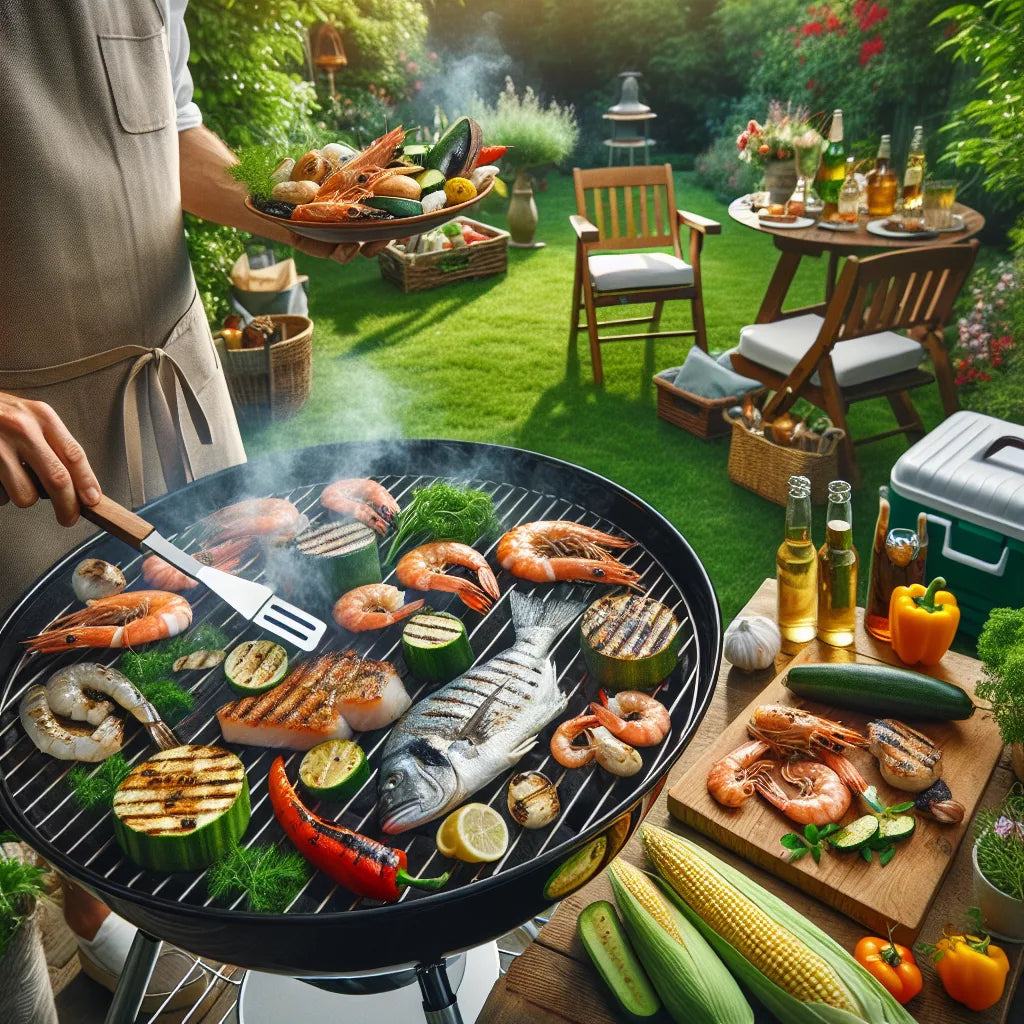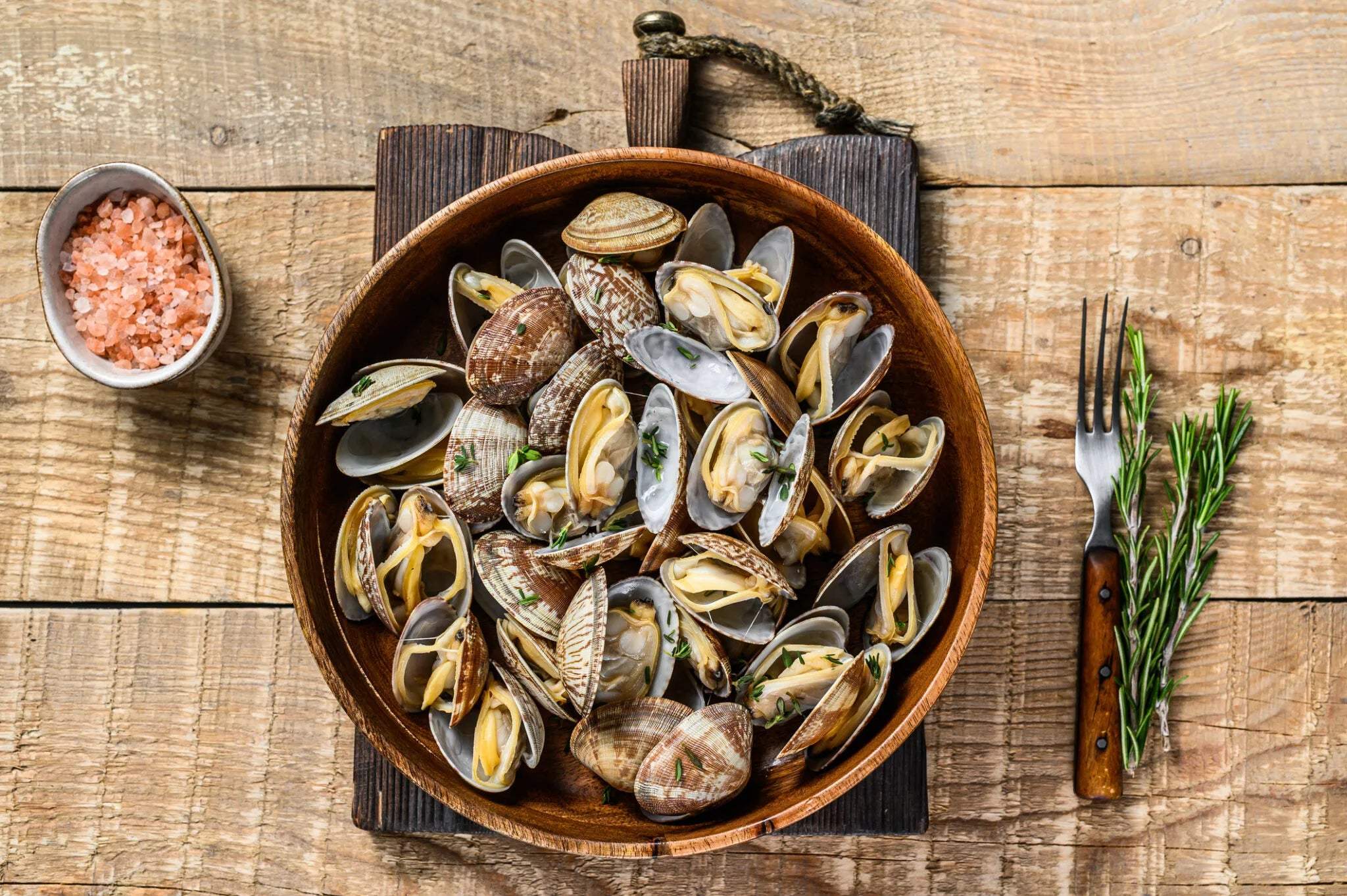
The Ultimate Guide to Grilling Seafood Outdoors
Why Grilling Seafood is the Perfect Outdoor Cooking Option
Grilling seafood outdoors is a culinary experience like no other. The high heat of the grill caramelizes the natural sugars in seafood, creating a smoky, slightly charred flavor that’s impossible to replicate with other cooking methods. Whether it’s the crispy skin of a grilled salmon fillet or the tender, smoky sweetness of shrimp skewers, grilling enhances the natural flavors and textures of seafood in a way that’s both simple and sophisticated.
From a health perspective, grilling seafood is one of the cleanest cooking methods available. Unlike frying, which adds unnecessary fats and calories, grilling allows you to cook with minimal oil while preserving the nutrients in the seafood. Fish and shellfish are already rich in omega-3 fatty acids, lean protein, and essential vitamins, making them a heart-healthy choice. Grilling ensures you retain these benefits without compromising on taste.
Seafood is also incredibly versatile, making it a perfect centerpiece for outdoor gatherings. Whether you’re hosting a casual backyard barbecue or an elegant al fresco dinner, seafood can be adapted to suit any occasion. From quick-cooking shrimp skewers to an impressive whole grilled snapper, there’s a seafood option for every palate and skill level. Plus, seafood pairs beautifully with a variety of sides, sauces, and beverages, making it a crowd-pleaser for guests of all ages.
Essential Tools and Equipment for Grilling Seafood
Grill Types: Gas, Charcoal, and Pellet Grills
Choosing the right grill is the first step to mastering grilling seafood. Gas grills are a popular choice for their convenience and precise temperature control, making them ideal for delicate seafood like scallops or fillets. Charcoal grills, on the other hand, impart a smoky, charred flavor that’s perfect for heartier options like salmon or whole fish. If you’re looking for versatility, pellet grills offer the best of both worlds, combining the ease of gas with the flavor-enhancing properties of wood pellets.
Must-Have Accessories
For grilling seafood effectively, you’ll need a few essential tools. A fish basket is invaluable for grilling delicate fillets that might otherwise fall apart. Skewers, whether metal or bamboo, are perfect for shrimp, scallops, or small pieces of fish. A sturdy grill brush is essential for cleaning the grates, while a pair of long-handled tongs will help you flip and maneuver seafood without breaking it. Don’t forget a meat thermometer to ensure your seafood is cooked to perfection.
Pro Tips for Setup
Before you start grilling seafood, it’s crucial to prep your grill properly. Begin by cleaning the grates thoroughly to remove any residue from previous cooking sessions. Once clean, oil the grates lightly to prevent sticking—a common issue when grilling seafood. Preheat the grill to the appropriate temperature, and if you’re using a charcoal grill, arrange the coals to create zones for direct and indirect heat. This setup will give you more control over the cooking process.
Choosing the Best Seafood for Grilling
Top Picks for Seafood Grilling
Not all seafood is created equal when it comes to grilling. Firm, meaty fish like salmon, tuna, and swordfish hold up well on the grill and are less likely to fall apart. Shellfish like shrimp, scallops, and lobster tails are also excellent choices, as they cook quickly and absorb smoky flavors beautifully. For a show-stopping centerpiece, consider grilling a whole fish like snapper or branzino.
Fresh vs. Frozen
When selecting seafood, freshness is key. Look for fish with bright, clear eyes and a mild, ocean-like smell. Shellfish should have tightly closed shells or, in the case of shrimp, a firm texture. That said, frozen seafood can be a good alternative if fresh options aren’t available. Just make sure to thaw it properly in the refrigerator before grilling.
Sustainability Matters
As a responsible griller, it’s important to consider the environmental impact of your seafood choices. Opt for sustainably sourced options by looking for certifications like the Marine Stewardship Council (MSC) label. Supporting sustainable fisheries not only helps protect marine ecosystems but also ensures the long-term availability of your favorite seafood.
Prepping Seafood for the Grill
Cleaning and Deboning
Proper preparation is essential for successful seafood grilling. Start by cleaning the fish thoroughly, removing any scales and rinsing it under cold water. If you’re working with fillets, check for pin bones by running your fingers along the flesh and removing them with tweezers. For shellfish, ensure they’re properly cleaned and deveined.
Marinades and Seasonings
A good marinade can elevate the flavor of your seafood while keeping it moist on the grill. Simple combinations like olive oil, lemon juice, garlic, and fresh herbs work beautifully. For a more adventurous twist, try Asian-inspired marinades with soy sauce, ginger, and sesame oil. If you prefer dry seasonings, a sprinkle of salt, pepper, and paprika can go a long way.
Skewering and Wrapping
Skewers are a great way to grill smaller pieces of seafood like shrimp or scallops. If you’re using bamboo skewers, soak them in water for at least 30 minutes to prevent burning. For delicate fish, consider wrapping it in foil or banana leaves to protect it from direct heat while infusing it with additional flavor.
Mastering the Art of Grilling Seafood
Direct vs. Indirect Heat
Understanding heat zones is crucial for grilling seafood. Direct heat is best for quick-cooking items like shrimp or thin fillets, while indirect heat is ideal for larger cuts or whole fish that need more time to cook through.
Cooking Times and Temperatures
Seafood cooks quickly, so it’s important to keep an eye on the clock. As a general rule, fish should be grilled for about 8-10 minutes per inch of thickness, flipping halfway through. Shrimp and scallops typically take 2-3 minutes per side. Use a meat thermometer to check for doneness—145°F is the recommended internal temperature for fish.
Avoiding Common Mistakes
To prevent sticking, always oil your grill grates and the seafood itself. Avoid overcooking by removing seafood from the grill as soon as it’s opaque and flakes easily with a fork. Finally, resist the urge to flip your seafood too often; one or two flips are usually sufficient.
Delicious Seafood Recipes for the Grill
- Grilled Salmon with Lemon and Dill: Brush salmon fillets with olive oil, season with salt and pepper, and grill skin-side down. Finish with a squeeze of lemon and a sprinkle of fresh dill.
- Garlic Butter Shrimp Skewers: Marinate shrimp in garlic, butter, and parsley, then thread onto skewers and grill until pink and slightly charred.
- Whole Grilled Snapper: Stuff a whole snapper with lemon slices, garlic, and herbs, then grill over indirect heat until the flesh is tender and flaky.
- Grilled Scallops with Herb Butter: Sear scallops over high heat, then drizzle with a mixture of melted butter, garlic, and fresh herbs.
Pairing Sides and Sauces with Grilled Seafood
Perfect Side Dishes
Grilled vegetables like asparagus, zucchini, and bell peppers make excellent accompaniments to seafood. Other great options include rice pilaf, quinoa salad, or a crisp green salad with a citrus vinaigrette.
Sauces and Dips
Enhance your seafood with flavorful sauces like chimichurri, garlic aioli, or mango salsa. These condiments add a burst of flavor and complement the smoky notes of grilled seafood.
Beverage Pairings
Pair your grilled seafood with a crisp white wine like Sauvignon Blanc or a light, citrusy beer. For cocktails, consider a refreshing mojito or a classic gin and tonic.
Cleaning Up After Grilling Seafood
Grill Maintenance Tips
After grilling, clean the grates while they’re still warm using a grill brush. This will make it easier to remove any stuck-on bits of seafood.
Eco-Friendly Disposal
Dispose of seafood scraps responsibly by composting or using biodegradable bags. Avoid leaving waste outdoors, as it can attract pests.
Storing Leftovers
Store leftover seafood in an airtight container in the refrigerator and consume within 1-2 days. Reheat gently to avoid drying it out.
Pro Tips for Hosting a Seafood Grilling Party
- Plan a diverse menu to cater to different tastes and dietary preferences.
- Set up a cozy outdoor space with string lights, comfortable seating, and music.
- Practice food safety by keeping raw seafood chilled and using separate utensils for raw and cooked items.
Frequently Asked Questions About Grilling Seafood
- How do I prevent fish from sticking to the grill? Oil the grates and the fish, and ensure the grill is properly preheated.
- What’s the best way to grill shellfish? Use skewers for shrimp and scallops, and grill lobster tails shell-side down.


